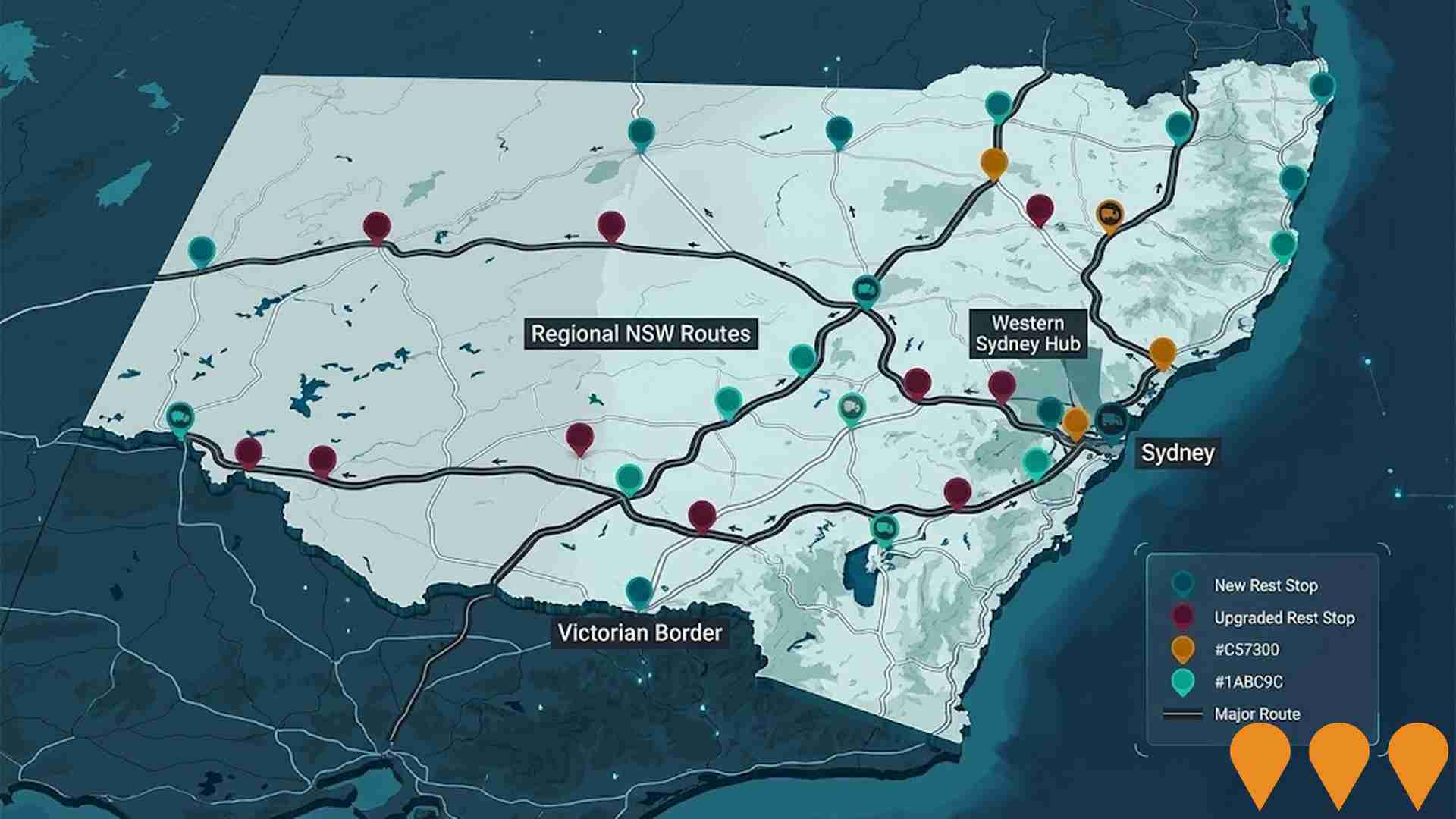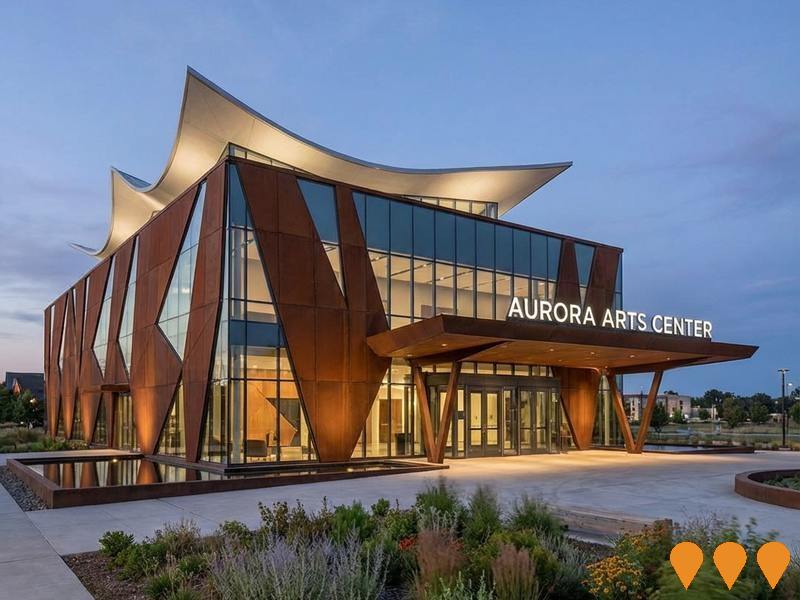Chart Color Schemes
est. as @ -- *
ABS ERP | -- people | --
2021 Census | -- people
Sales Activity
Curious about local property values? Filter the chart to assess the volume and appreciation (including resales) trends and regional comparisons, or scroll to the map below view this information at an individual property level.
Find a Recent Sale
Sales Detail
Population
An assessment of population growth drivers in Rivett reveals an overall ranking slightly below national averages considering recent, and medium term trends
Rivett's population, as of August 2025, is approximately 3,387 people. This figure represents an increase of 33 individuals since the 2021 Census, which reported a population of 3,354 people. The growth is inferred from the estimated resident population of 3,385 in June 2024 and the addition of 4 new addresses validated after the Census date. This results in a density ratio of 2,103 persons per square kilometer, which exceeds the average seen across national locations assessed by AreaSearch. Rivett's growth rate of 1.0% since the 2021 census is higher than that of the SA3 area (0.5%), though it remains modest overall. Overseas migration contributed approximately 52.7% to recent population gains in the area.
AreaSearch uses ABS/Geoscience Australia projections for each SA2 area, released in 2024 with a base year of 2022. For areas not covered by this data and years post-2032, age group growth rates from the ACT Government's SA2 area projections are adopted, also using 2022 as the base year. According to these projections, Rivett's population is expected to decline by 43 persons by 2041. However, specific age cohorts are projected to grow, notably the 55 to 64 age group, which is anticipated to increase by 101 people.
Frequently Asked Questions - Population
Development
Residential development activity is lower than average in Rivett according to AreaSearch's national comparison of local real estate markets
Rivett has experienced approximately six dwelling approvals annually. Over the past five financial years, from FY21 to FY25, around 30 homes were approved, with two more approved in FY26 so far.
Each year, about 3.6 people have moved to the area for each dwelling built during these five years. This high demand exceeds new supply, leading to price growth and increased buyer competition. The average construction cost value of new properties is $381,000. Compared to the Australian Capital Territory, Rivett has around three-quarters the rate of new dwelling approvals per person.
Nationally, it ranks at the 24th percentile for areas assessed, indicating limited buyer options and strengthening demand for established dwellings. This activity is below the national average, suggesting the area's established nature and potential planning limitations. Recent development in Rivett has been entirely comprised of detached dwellings, maintaining its traditional suburban character with a focus on family homes appealing to those seeking space. With around 800 people per dwelling approval, Rivett reflects a highly mature market. The population is expected to remain stable or decline, potentially reducing pressure on housing and creating opportunities for buyers.
Frequently Asked Questions - Development
Infrastructure
Rivett has moderate levels of nearby infrastructure activity, ranking in the 45thth percentile nationally
No infrastructure changes are currently planned for this area. No projects have been identified by AreaSearch that could impact it. Key initiatives include Molonglo Group Centre's transition to a town centre, Fetherston Weston developments, Canberra Hospital Master Plan improvements, and Deakin Private Hospital expansions.
Professional plan users can use the search below to filter and access additional projects.
INFRASTRUCTURE SEARCH
 Denotes AI-based impression for illustrative purposes only, not to be taken as definitive under any circumstances. Please follow links and conduct other investigations from the project's source for actual imagery. Developers and project owners wishing us to use original imagery please Contact Us and we will do so.
Denotes AI-based impression for illustrative purposes only, not to be taken as definitive under any circumstances. Please follow links and conduct other investigations from the project's source for actual imagery. Developers and project owners wishing us to use original imagery please Contact Us and we will do so.
Frequently Asked Questions - Infrastructure
Low and Mid-Rise Housing Policy
State-wide NSW planning reforms via amendments to the State Environmental Planning Policy to enable more diverse low and mid-rise housing (dual occupancies, terraces, townhouses, manor houses and residential flat buildings up to 6 storeys) in well-located areas within 800 m of selected train, metro and light-rail stations and town centres. Stage 1 (dual occupancies in R2 zones statewide) commenced 1 July 2024. Stage 2 (mid-rise apartments, terraces and dual occupancies near stations) commenced 28 February 2025. Expected to facilitate up to 112,000 additional homes over the next five years.
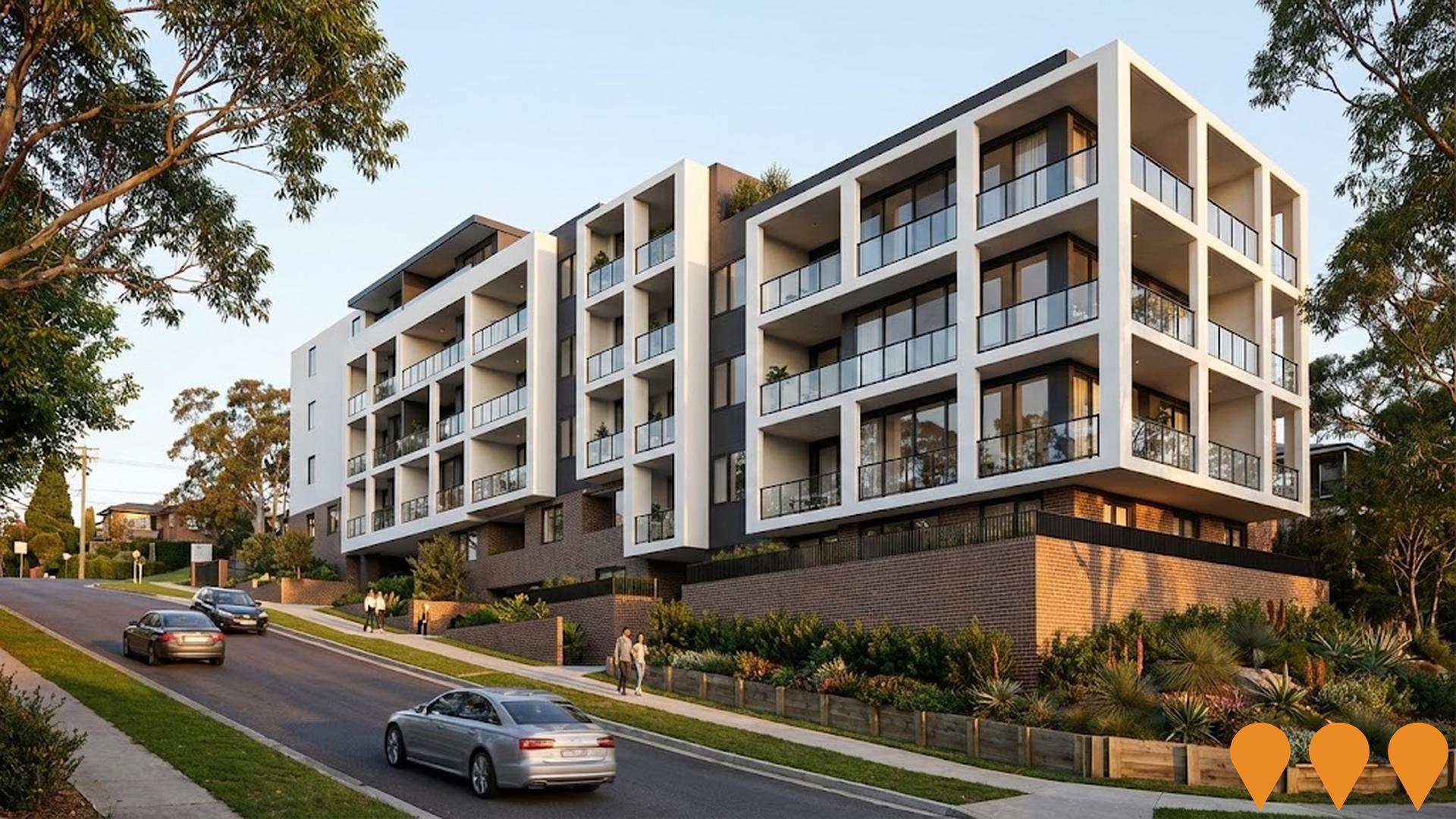
Canberra Hospital Master Plan
Long-term transformation of Canberra Hospital campus (2021-2041). The new Critical Services Building (Building 5) opened in 2023. Multiple stages are now in construction or detailed planning, including SPIRE Stage 1 (new emergency, surgical and intensive care facilities) and ongoing campus renewal works to deliver modern clinical facilities.

Canberra Light Rail Stage 4 - Woden to Tuggeranong
Proposed extension of Canberra's light rail network from Woden Town Centre south to Tuggeranong Town Centre via Mawson and the Athllon Drive corridor. This future stage aims to complete the north-south radial mass transit spine, connecting major residential, employment and activity centres while supporting bus, cycling, walking and private vehicle integration.
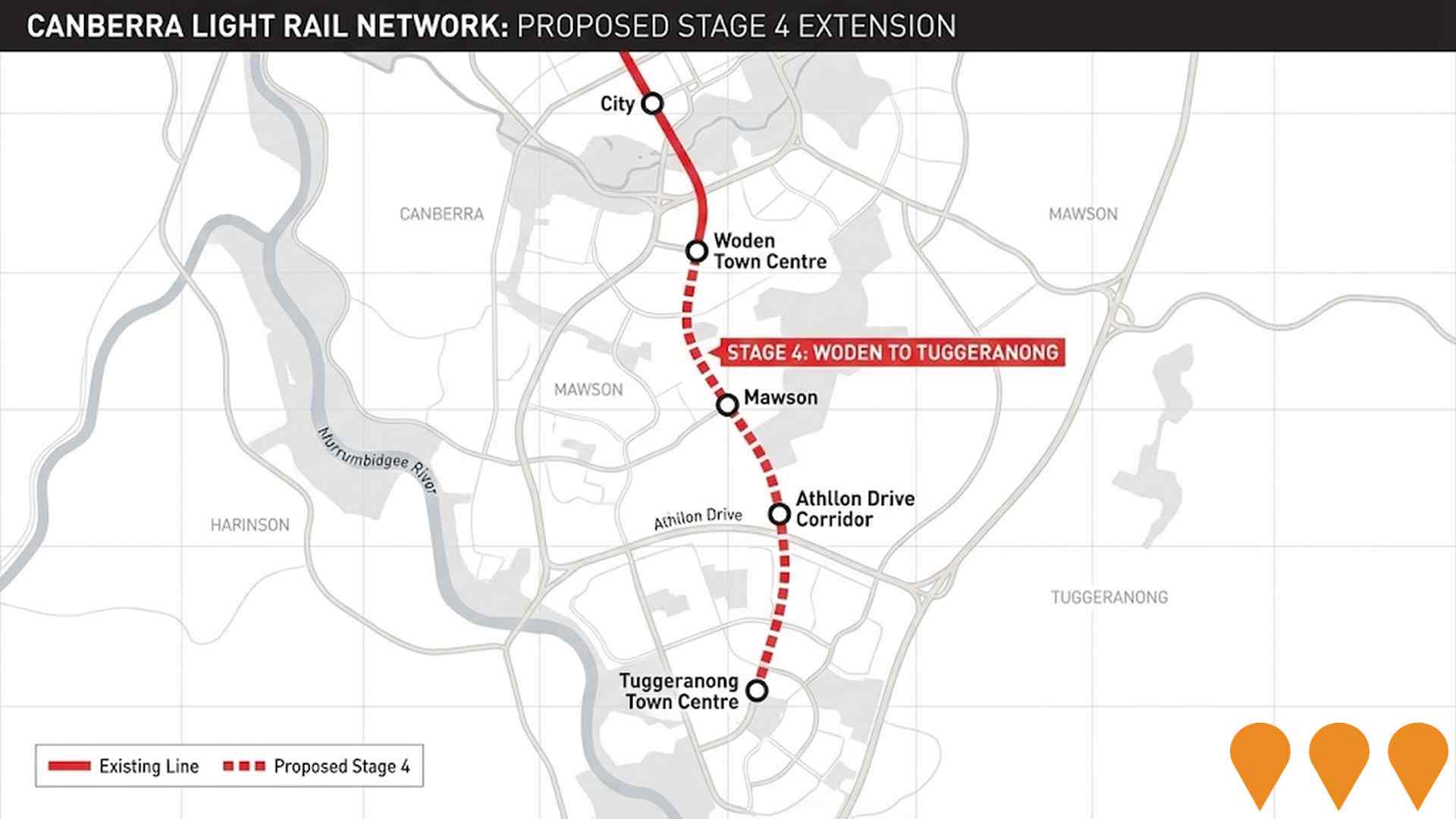
Molonglo Group Centre to Town Centre Transition
Transition of Molonglo Group Centre to Town Centre status to accommodate 70,000+ residents by 2050. Will include college, library, community centre, transport interchange and major commercial centre development.
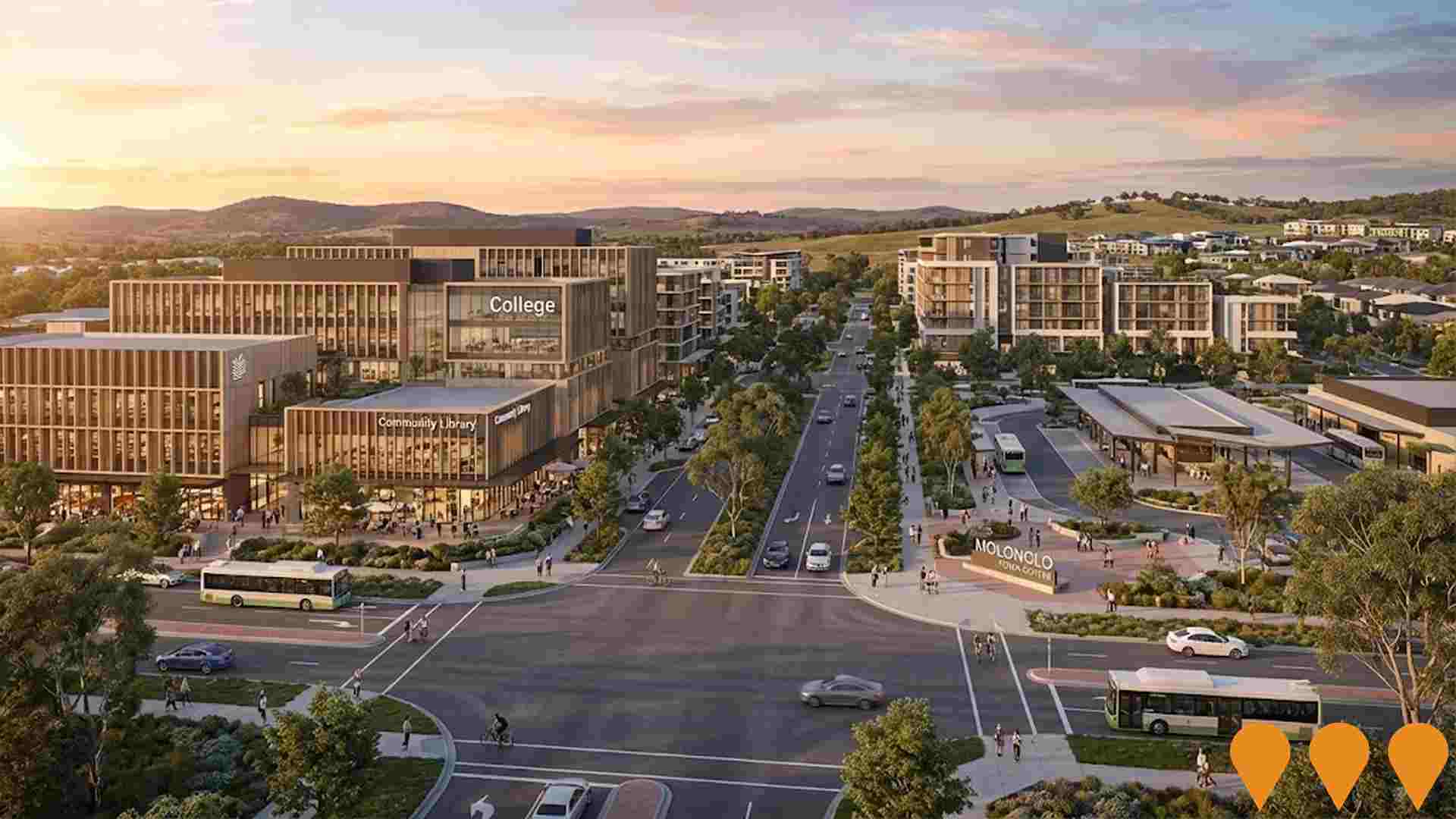
Enhanced bus and light rail corridors (Belconnen & Queanbeyan to Central Canberra)
ACT is progressing an integrated program to enhance high-frequency bus and future light rail corridors that link Belconnen and Queanbeyan with central Canberra. Light Rail Stage 2A (City to Commonwealth Park) commenced construction in early 2025 with services targeted from 2028, while planning and approvals continue for Stage 2B to Woden. The ACT Government has acknowledged and is planning upgrades for the Belconnen-to-City bus corridor as groundwork for a future east-west light rail Stage 3, and is coordinating cross-border public transport initiatives with NSW through the Queanbeyan Region Integrated Transport Plan and the ACT-NSW MoU for Regional Collaboration.
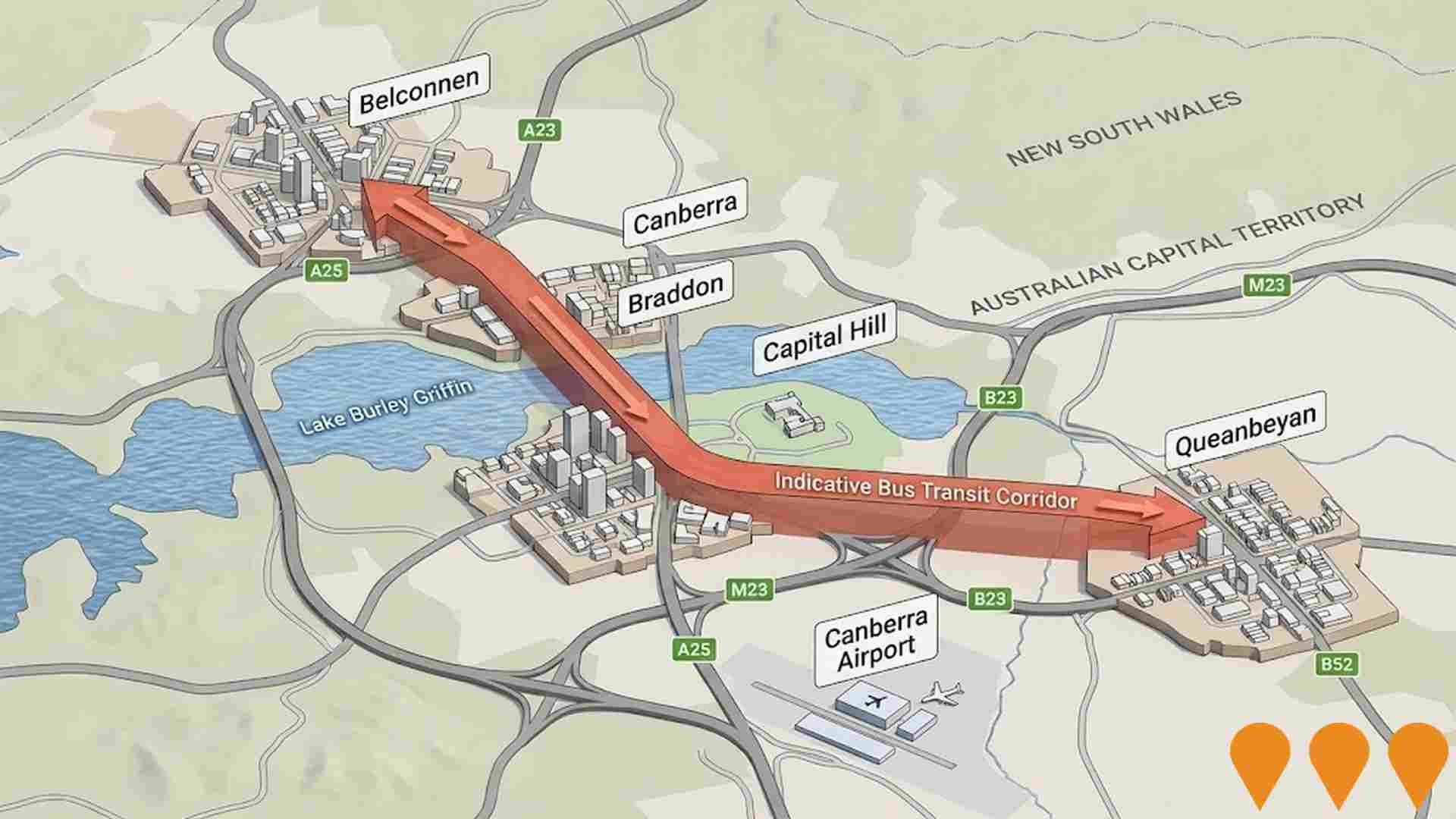
HumeLink
HumeLink is a new 500kV transmission line project connecting Wagga Wagga, Bannaby, and Maragle, spanning approximately 365 km. It includes new or upgraded infrastructure at four locations and aims to enhance the reliability and sustainability of the national electricity grid by increasing the integration of renewable energy sources such as wind and solar.
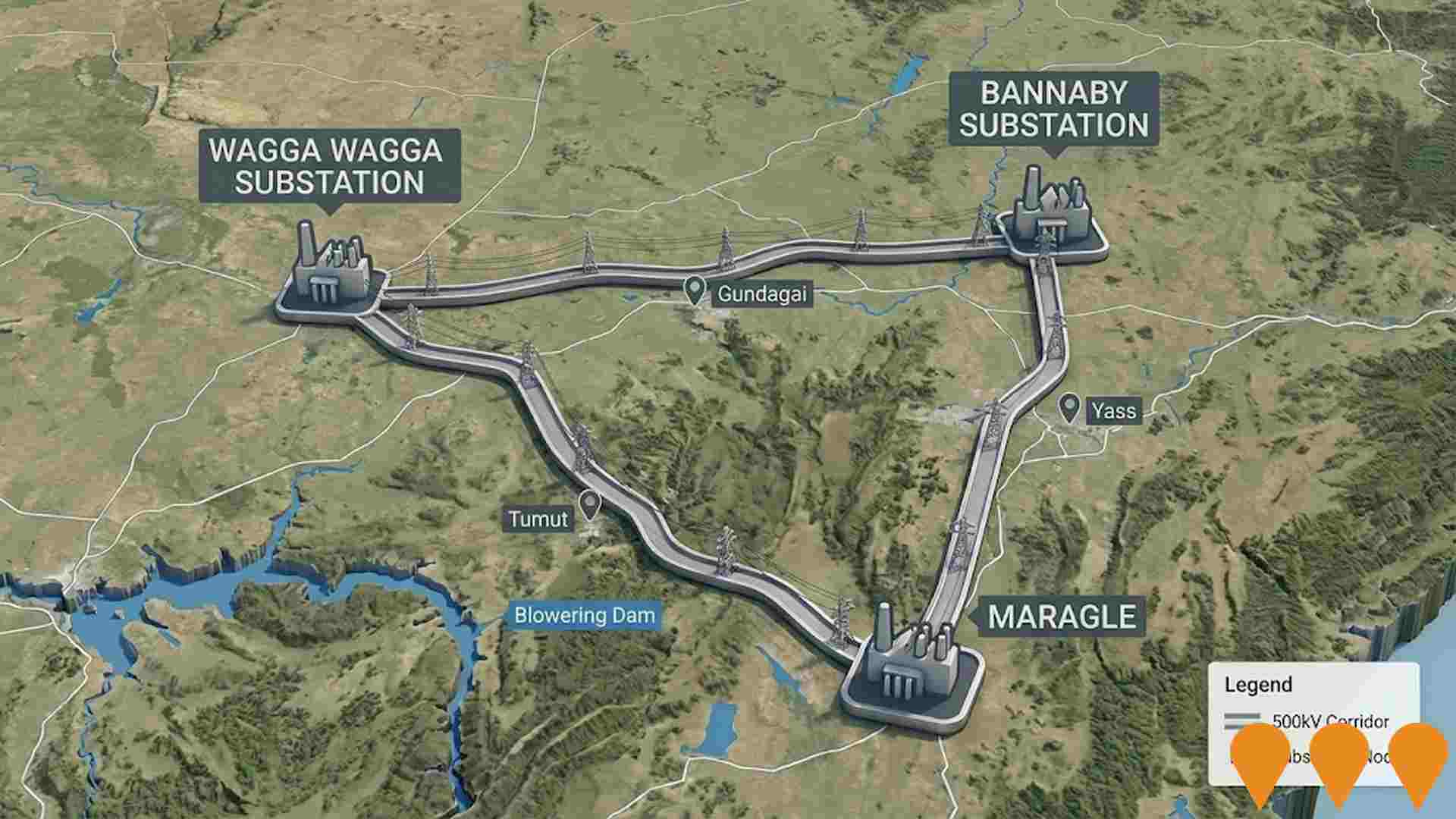
Queanbeyan Regional Integrated Transport Plan
Comprehensive transport planning initiative with 64 key actions for next 10 years. Addresses road safety, active transport connectivity, public transport availability, and future transport needs. Improved connections between Queanbeyan and ACT.
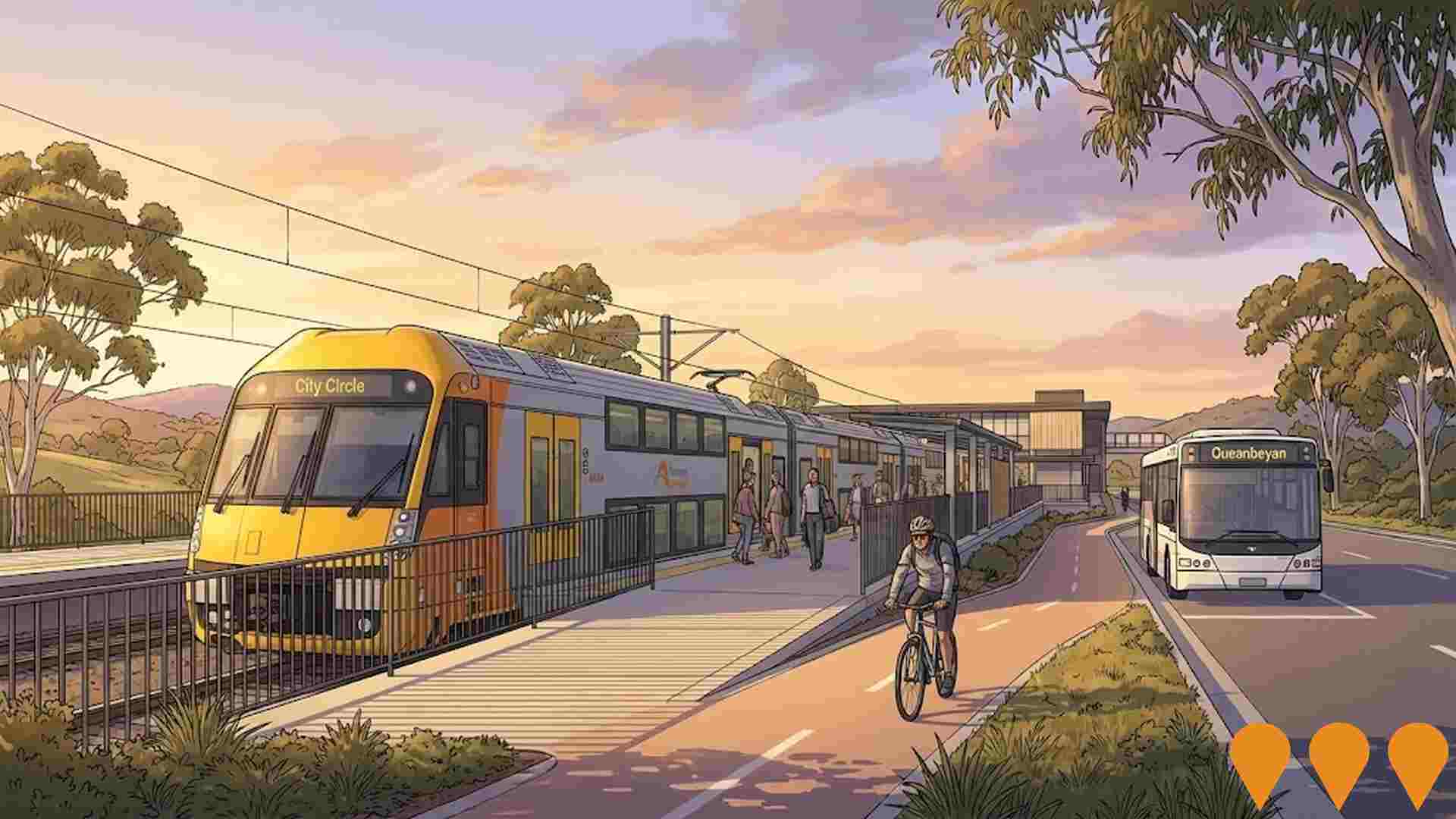
Big Canberra Battery (Williamsdale BESS)
A 250 MW / 500 MWh battery energy storage system at Williamsdale in southern Canberra, delivered by Eku Energy as Stream 1 of the ACT Government's Big Canberra Battery. Construction commenced in November 2024 with partners CPP and Tesla supplying Megapack systems. The asset will connect to Evoenergy's 132 kV network near the Williamsdale substation to provide two hours of dispatchable power, grid services and reliability for the ACT. Target operations in 2026.
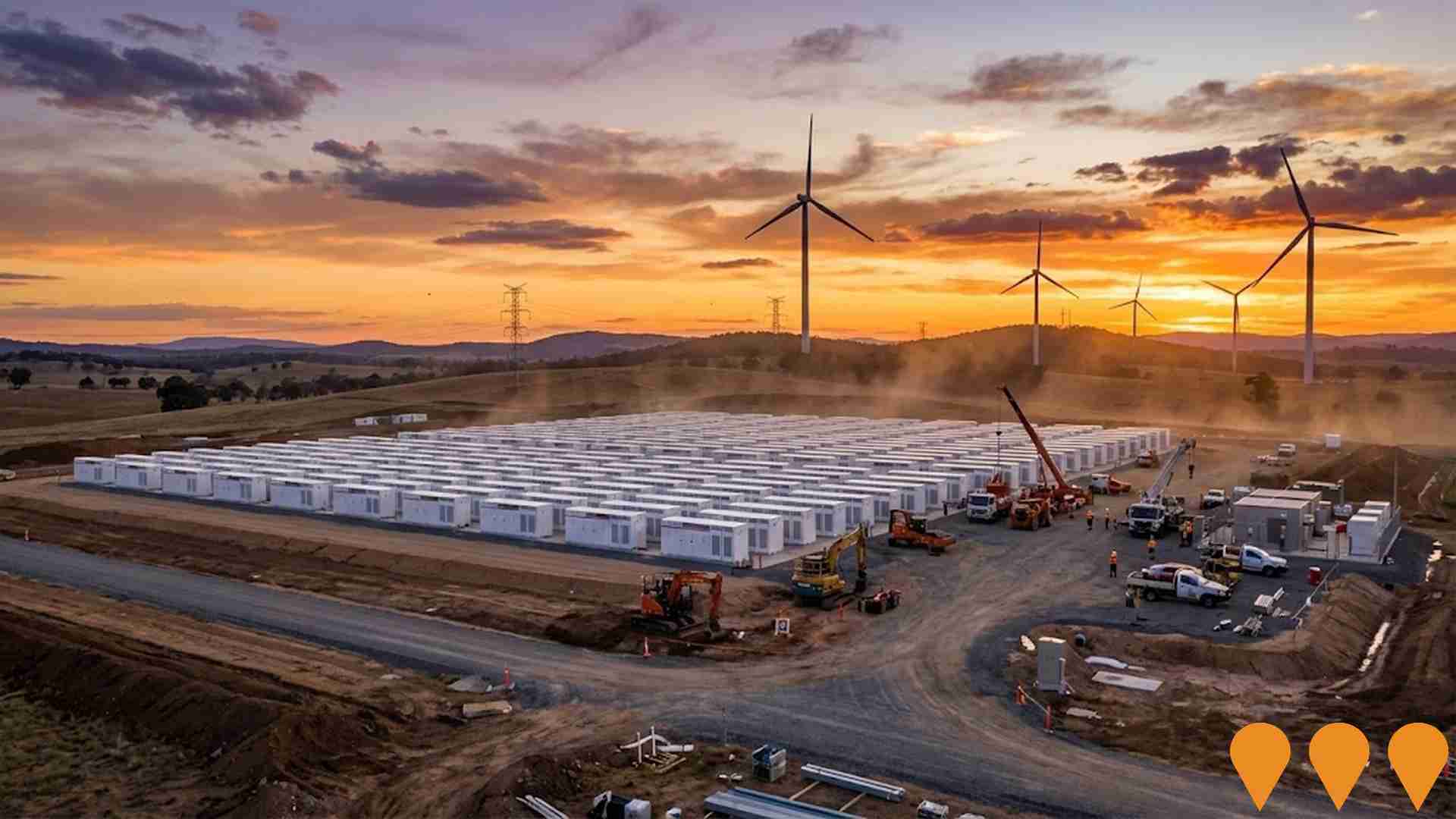
Employment
AreaSearch analysis reveals Rivett recording weaker employment conditions than most comparable areas nationwide
Rivett's workforce is highly educated with notable representation in essential services sectors. The unemployment rate was 4.6% as of June 2025.
Over the past year, employment grew by an estimated 1.7%. As of June 2025, 1,721 residents were employed while the unemployment rate was 1.2% higher than the Australian Capital Territory's rate of 3.4%. Workforce participation in Rivett lagged behind at 63.4%, compared to the Australian Capital Territory's 69.6%. Key industries employing Rivett residents are public administration & safety, health care & social assistance, and education & training.
The area specialises in health care & social assistance with an employment share of 1.2 times the regional level. However, accommodation & food services were under-represented at 4.7%, compared to the Australian Capital Territory's 6.5%. Limited local employment opportunities are suggested by the Census working population count versus resident population. Over a 12-month period ending June 2025, employment increased by 1.7% while labour force grew by 1.6%, keeping unemployment broadly flat. In comparison, Australian Capital Territory saw employment grow by 1.9%, labour force expand by 1.6%, and unemployment fall by 0.3 percentage points during the same period. Jobs and Skills Australia's national employment forecasts from May 2025 project a 6.6% increase over five years and 13.7% over ten years for national employment growth. Applying these projections to Rivett's employment mix suggests local growth of approximately 6.7% over five years and 13.6% over ten years, based on simple weighting extrapolation for illustrative purposes only.
Frequently Asked Questions - Employment
Income
Income metrics indicate excellent economic conditions, with the area achieving higher performance than 75% of national locations assessed by AreaSearch
AreaSearch's data for financial year 2022 shows Rivett's median income at $62,997 and average income at $74,944. This is higher than national averages of $58,133 (median) and $75,143 (average). In the Australian Capital Territory, median income was $68,678 and average income was $83,634. By September 2025, estimated incomes in Rivett would be approximately $71,565 (median) and $85,136 (average), based on a 13.6% Wage Price Index growth since financial year 2022. Census 2021 data ranks Rivett's household, family, and personal incomes between the 79th and 86th percentiles nationally. The $1,500 - 2,999 earnings band includes 30.5% of Rivett residents (1,033 individuals), similar to the broader area where 34.3% fall within this range. High weekly earnings exceeding $3,000 are achieved by 34.2% of households, indicating strong consumer spending power. After housing costs, residents retain 86.9% of their income, reflecting robust purchasing power. Rivett's SEIFA income ranking places it in the 8th decile.
Frequently Asked Questions - Income
Housing
Rivett is characterized by a predominantly suburban housing profile, with a higher proportion of rental properties than the broader region
Dwelling structure in Rivett, as evaluated at the latest Census held on 28 August 2016, comprised 86.8% houses and 13.2% other dwellings such as semi-detached homes, apartments, and 'other' dwellings. This compares to the Australian Capital Territory's dwelling structure of 81.7% houses and 18.2% other dwellings. Home ownership in Rivett was at 32.8%, with mortgaged dwellings at 41.8% and rented dwellings at 25.4%. The median monthly mortgage repayment in Rivett was $2,140 as of the Census date, below the Australian Capital Territory average of $2,251. The median weekly rent figure for Rivett was recorded at $322, compared to the Australian Capital Territory's $420. Nationally, Rivett's mortgage repayments were significantly higher than the Australian average of $1,863, while rents were substantially below the national figure of $375.
Frequently Asked Questions - Housing
Household Composition
Rivett has a typical household mix, with a lower-than-average median household size
Family households comprise 72.3% of all households, including 31.9% couples with children, 26.7% couples without children, and 12.6% single parent families. Non-family households constitute the remaining 27.7%, with lone person households at 25.7% and group households comprising 1.9%. The median household size is 2.5 people, which is smaller than the Australian Capital Territory average of 2.6.
Frequently Asked Questions - Households
Local Schools & Education
The educational profile of Rivett exceeds national averages, with above-average qualification levels and academic performance metrics
In Rivett, 41.7% of residents aged 15+ have university qualifications, exceeding Australia's average of 30.4%. The area has a significant educational advantage, with bachelor degrees being the most common at 24.0%, followed by postgraduate qualifications at 11.6% and graduate diplomas at 6.1%. Vocational credentials are also prevalent, with 26.9% of residents holding such qualifications, including advanced diplomas (10.6%) and certificates (16.3%). Educational participation is high, with 29.7% of residents currently enrolled in formal education.
This includes 11.4% in primary education, 6.8% in secondary education, and 5.0% pursuing tertiary education.
Frequently Asked Questions - Education
Schools Detail
Nearby Services & Amenities
Transport
Transport servicing is moderate compared to other areas nationally based on assessment of service frequency, route connectivity and accessibility
Transport analysis in Rivett shows 19 active public transport stops operating, all being bus stops. These are serviced by two routes combined, offering 345 weekly passenger trips. Transport accessibility is rated excellent, with residents typically located 166 meters from the nearest stop.
Service frequency averages 49 trips per day across both routes, equating to approximately 18 weekly trips per individual stop.
Frequently Asked Questions - Transport
Transport Stops Detail
Health
Health performance in Rivett is lower than average with common health conditions somewhat prevalent across both younger and older age cohorts
Rivett faces significant health challenges, with common health conditions being somewhat prevalent across both younger and older age cohorts. The rate of private health cover is very high at approximately 57% of the total population (~1,933 people), compared to 60.9% across the Australian Capital Territory.
The most common medical conditions in the area are mental health issues and arthritis, impacting 9.3% and 9.1% of residents respectively. Meanwhile, 64.9% of residents declare themselves as completely clear of medical ailments, compared to 66.3% across the Australian Capital Territory. The area has 20.1% of residents aged 65 and over (680 people). Health outcomes among seniors present some challenges, broadly in line with the general population's health profile.
Frequently Asked Questions - Health
Cultural Diversity
The level of cultural diversity witnessed in Rivett was found to be above average when compared nationally for a number of language and cultural background related metrics
Rivett's population showed above average cultural diversity, with 21.7% born overseas and 14.9% speaking a language other than English at home. Christianity was the dominant religion in Rivett, comprising 42.5%. Hinduism was slightly overrepresented compared to the Australian Capital Territory, making up 2.2% of Rivett's population.
The top three ancestry groups were Australian (26.5%), English (25.2%), and Irish (10.1%). Notably, French (0.9%) Welsh (0.8%) and Dutch (1.8%) ethnicities were overrepresented compared to regional averages.
Frequently Asked Questions - Diversity
Age
Rivett's population is slightly older than the national pattern
The median age in Rivett is 39, which is higher than the Australian Capital Territory's figure of 35 and comparable to Australia's median age of 38. The age group of 75-84 years shows strong representation at 9.3%, compared to the Australian Capital Territory's figure. However, the 25-34 age cohort is less prevalent in Rivett at 12.1%. Between 2021 and the present time, the proportion of the population in the 75-84 age group has increased from 6.4% to 9.3%, while the 65-74 age cohort has declined from 10.5% to 8.6%. Looking ahead to the year 2041, demographic projections indicate significant shifts in Rivett's age structure. The 55-64 age group is expected to grow by 30%, reaching a population of 443 from its current figure of 339. This growth reflects an aging population trend, with those aged 65 and above comprising 51% of the projected population growth. Conversely, the 0-4 and 35-44 age cohorts are expected to experience population declines.
